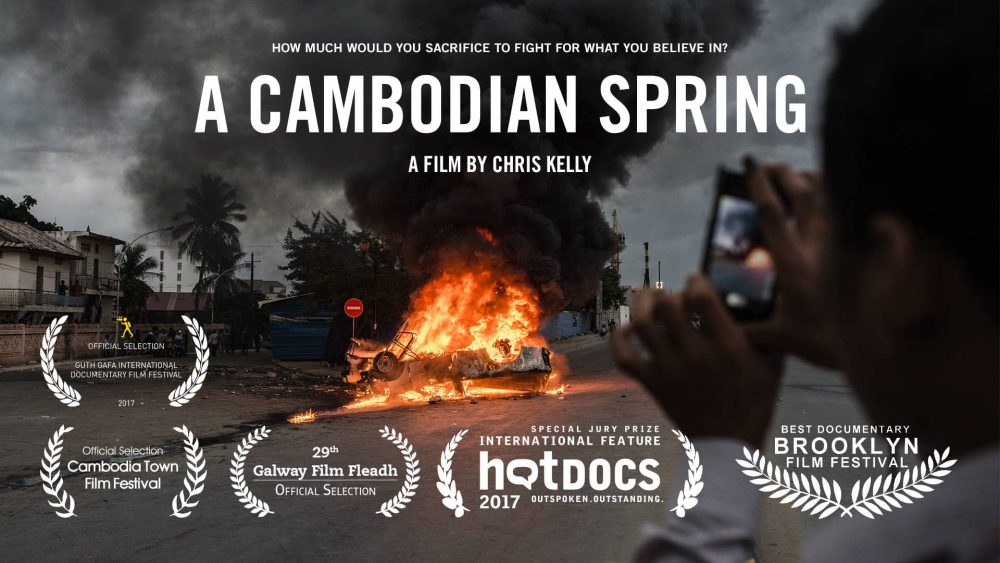
Dir.: Chris Kelly; Documentary; UK/Canada/ROI 2017; 120 min.
Chris Kelly six year long journey into contemporary Cambodian life is a trip into the Heart of Darkness, to paraphrase Joseph Conrad.
To fully comprehend the horrors unfolding it is necessary to bear in mind that Cambodia is ruled today by the Cambodian People’s Party, led by Prime Minister for life, Hun Sen since 1985 – and this is the same Party of Pol Pot and the Khmer Rouge, changed only in name to the Kampuchean People’s Revolutionary Party, having renounced Communism and genocide and claiming the lives of over two million citizens, is never far from the surface.
Kelly started out in 2007 with what seemed then a local conflict: Once a retreat in the capital Phnom Penh, Boeung Kak Lake has become a wasteland having been filled steadily with sand. The World Bank sponsored project was carried out by the Shukaku Company with strong ties to the government. In the process of draining the lake, the houses of the surrounding area were flooded. Those dwellings still standing would soon be demolished. But the inhabitants of the waterlogged houses have little choice but to stay put, since the compensation offered by the government is so meagre they cannot afford to buy any replacement homes.
Working class mothers Tep Vanny and Toul Srey Pov (who would later fall out for personal reasons) take up the unequal fight with Shukaku and the government, fighting for a fair compensation. Both will be imprisoned on trumped up charges, but they are joined by a surprising ally, The Venerable Luon Sovath, a Buddhist monk from the province of Siam Reap. Mediagenic and charismatic, he is under duress from the Church leadership, since the Supreme Patriarch of the Cambodia is appointed by the government – clear parallels with China, undermining the struggle for religious freedom in Tibet.
The documentary takes its title from the return from exile in July 2013 of the opposition leader Sam Rainsy, who would found the Cambodian National Rescue Party. In 2010 Rainsy was sentenced to ten years in prison and had to leave the country. The opposition CNRP gained 55 sets in Parliament in the 2013 election. But both Rainsy and his successor as Party leader, Kem Sokha accused the ruling party of vote fraud. Rainsy again had to leave the country in 2016, after he accused a high official of the CPP of being a torturer in the prisons of the Khmer Rogue. His political future is uncertain, since he was banned by the CPP from political activities for life.
There is no overriding narrative here, more a gathering of moments, subjectively collected, very much like a “Fly on the Wall”. In a certain way Kelly’s style recalls Tarkovsky’s “visual fugues”; abstract visual sequences that are thematic strains. Water, grass and flames contrast with the clashes of the demonstrators with the heavily armed forces of the government. State corruption, supported by the Church, is not easily broken because, as Toul Srey Pov puts it: “It’s easy to wake a sleeping person, but you can’t wake them up when they are only pretending to sleep.” AS
ON RELEASE FROM 25 MARCH 2018